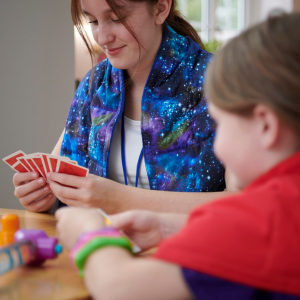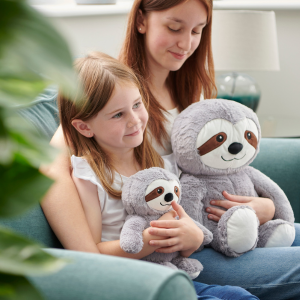Get exclusive deals you won't find anywhere else straight to your inbox.

Tips For Managing Fireworks Season
As a parent of an autistic adult, I understand how daunting the prospect of fireworks season can be. The loud, unpredictable noises, excess smoke and strange smells in the air can all lead to anxiety, stress and sensory overload. We’ve tried various coping methods over the years and have a found a few to be quite successful. This year we thought we’d share a few of our top tips for managing fireworks season in the hope they may help ease the stress of the season for you and/or your child.
Communication
Rather than dreading the thought of fireworks season and bracing for the meltdowns I always felt it better to do my research and get prepared. This is an easy (and completely free!) tool and can be planned with as much detail as needed to suit you and your child. Try chatting about what fireworks are, what they do, what happens, and it may help reduce the initial anxiety. You could even have a go at creating some pictures with tactile sensory resources such as paint, sand, and textured paper to help show how fun and exciting fireworks can be. It’s important to remember to be as detailed as you need to be for your child.
Watch videos or clips
It can be difficult to explain what fireworks are, so an easy and safe way to do this is to check out some videos online. Being able to physically see and hear (if you think your child will be OK), what fireworks look and sound like may really help ease the anxiety. Doing this in a familiar, safe environment is important for reinforcing a feeling of calm. The videos can also help show how exciting fireworks are and how they can be used to celebrate special occasions. Depending on your child’s age and understanding, talking about where they might see fireworks and which ones they liked the look of could also be a good way of creating a more positive view of them.
Advanced planning
If you are venturing out to watch a fireworks display, or having one at home, plan ahead. Create a visual storyboard of the event, talk about who is coming, where the event will be and what to expect. You could even map out 'safe zones' where you can distance or remove yourself from the situation if needed. Depending upon you or your child's needs a trip to the location in advance could help eliminate additional anxiety.

Make sure to wear appropriate clothing. Weighted hoodies or sensory hug shirts help to calm and relax, and can be worn very discreetly. Bring along ear defenders or ear plugs to reduce uncomfortable noises and fidget toys to keep fingers occupied. Communication fans are also a useful tool to have to hand allowing you or your child to communicate when situations become too much. Being mindful of your child's age and understanding, discuss safety tips and important information to keep everyone happy and safe.
Plan activities to distract and calm
It’s a good idea to prepare some calming activities to do during the times when fireworks are going to be most popular. Any familiar or comforting tasks that can help distract and focus can help your child calm and relax. This could be watching a movie, playing with sensory lights in a sensory den, reading a favourite book, surrounding themselves with cuddly toys or even a colouring activity. If you know that neighbours are likely to have fireworks, find out when that’s likely to be and then you could even go to a friend / family members house so you’re not home when they are going to start.

Stock up on sensory resources
Ear Defenders and ear plugs are a real must have at this time of year. Not only can they help reduce uncomfortable and louds sounds, but they help create a safe environment for the wearer. Ear Defenders can be easily popped into a bag or rucksack and are comfortable and practical. Ear Plugs are more suited to older children and adults, and tend to be more discreet than ear defenders.
Create a safe environment
Out of all our tips this one is the most important – creating a safe sensory environment at home. Pull together all your best at home sensory resources to help create a sensory ‘timeout’ space to help cope with the noise and unfamiliar sounds. If your child has a sensory den this could be ideal. The dark, controlled space will help provide a sense of calm. Try adding sensory resources such as lights, bubble tubes, cuddly animals and fidget toys. It can be a welcoming space during stressful situations. It may well be that you child has a particular favourite blanket, fidget toy or story book that they turn to during times of unease. Whatever works for your child make sure it is accessible and ready when needed.

Look at weighted products
Weighted Therapy is a proven sensory resource for helping to calm and relax. If you are familiar with the concept and have weighted resources at home, such as a weighted blanket, weighted lap pad or weighted animal, then these will really help reduce anxiety. If you are unfamiliar with weighted therapy and haven’t yet tried any resources of this nature, check out our guide to weighted therapy. Good first-time products to try are the Weighted Animals, Weighted Lap Pads and Weighted Shoulder Wraps.
Additional resources
For more tips on bonfire night and fireworks season, the National Autistic Society have a good guide to help turn fireworks seasons into a more positive experience for all.

